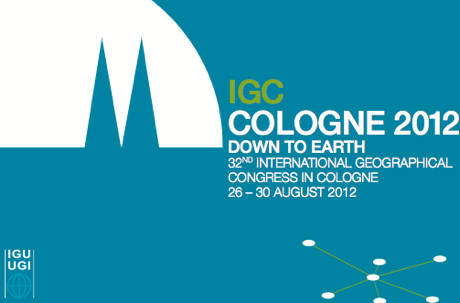
El trabajo titulado “Urban watercourses as key socio-ecological link in Santiago de Chile?” será presentado por el investigador Alexis Vásquez en el 32nd International Geographical Congress, a realizarse en Colonia, Alemania, entre el 26 – 30 de agosto del 2012.
A continuación encontrarás el resumen del trabajo:
“Urban watercourses as key socio-ecological link in Santiago de Chile?”
Urban watercourses such as streams, canals and rivers are structural components of the Santiago landscape. Our hypothesis is, that they have the potential to serve as key links between urban social and ecological natural systems and to provide environmental services, helping to reduce socio-environmental problems and to stabilizing the link between social and ecological systems in an urban setting. Analyzing environmental characteristics and functions of riparian zones as well as exploring opportunities and constraints to develop multifunctional riparian greenways, helps to assess their potential to serve as key link between social and ecological dimensions ? as multifunctional riparian greenways – and to set priorities in urban decision making.
For two watercourses – Mapocho river and Zanjón de la Aguada – integrative analyses of the socio-ecological systems have been carried out. As key features for the analysis social pattern, transport infrastructure, flood risk, land use/cover, public green spaces, native woody species distribution as well as air temperature and wind patterns have been addressed. Local stakeholders were interviewed to identify opportunities and constraints to develop multifunctional riparian greenways.
Zanjón de la Aguada and Mapocho rivers have been heavily affected by the urbanization process that has a much higher impact close to the stream. More than 50% of riparian zone population lives in the flood prone area.
The most important opportunities to develop multifunctional riparian greenways are related to:
-These watercourses flow through 12 and 9 municipalities, they have the potential to link the social and urban fragmented landscape.
-In some segments they still are providing cooling effects, harbouring native woody species and acting as wind corridors.
-An increasing number of social movements strive for urban greening, agriculture, and ecology.
On the other hand, the most important constraints are:
- More than 20% of Mapocho and Zanjón de la Aguada riparian zones are covered by dense residential areas.
- There is a high administrative spatial fragmentation due to a missing authority for the metropolitan area.
- Awareness of the complexity and necessity of greenways on the part of political actors and the local communities is missing.
In order to link better the urban social and ecological systems, to benefit the opportunities and to overcome the constraints mentioned above at the best, a Riparian Multifunctional Greenway Strategy should be developed covering the built-up areas as well as the catchment areas of the watercourses investigated. In this contribution, 1) an integrative socio-ecological system analysis of the selected urban riparian zones will be presented. 2) Opportunities and 3) constraints to develop multifunctional riparian greenways will discussed, and finally 4) conclusions how to link better the socio-ecological system will be drawn.
Para más información: https://igc2012.org/frontend/index.php
